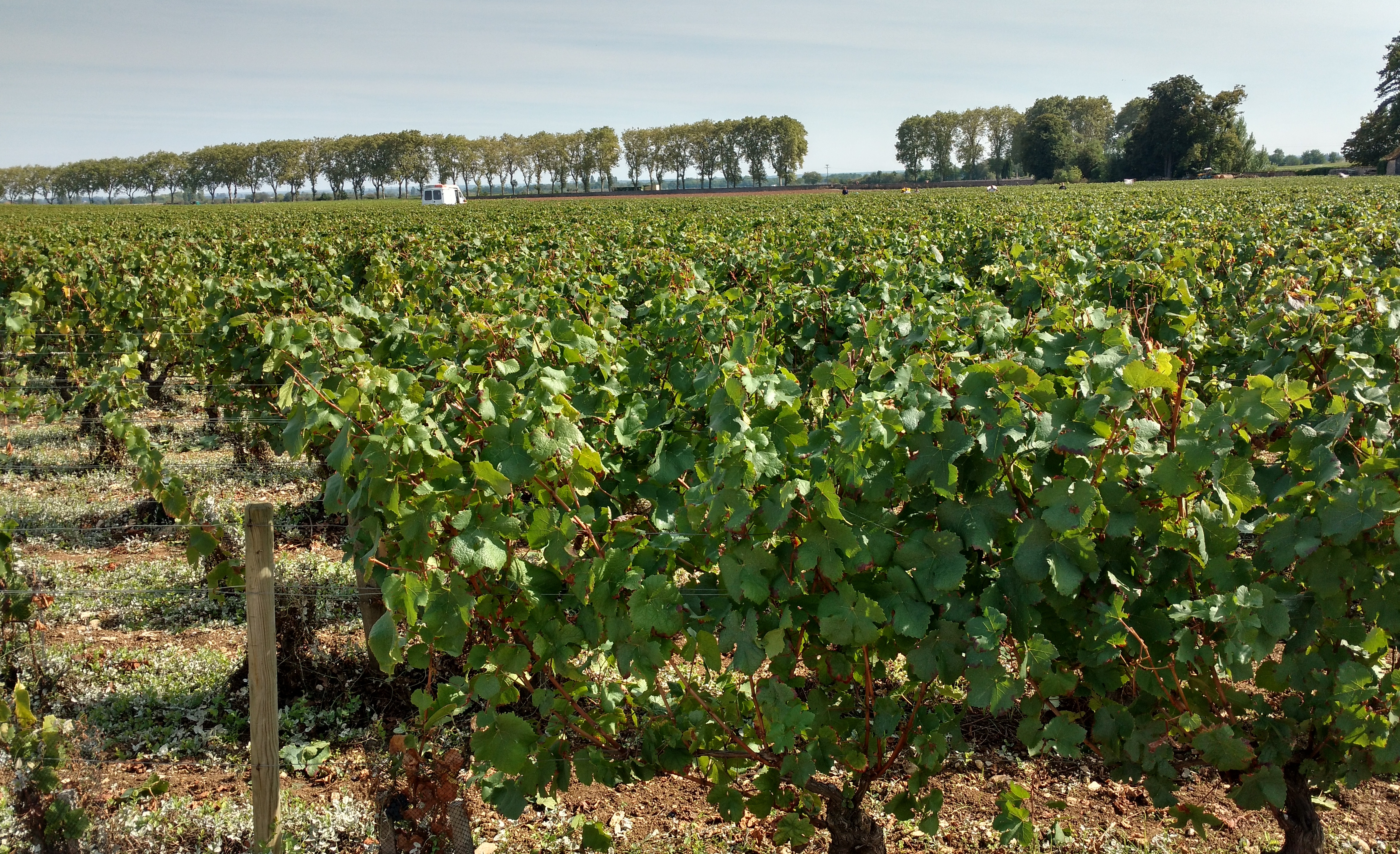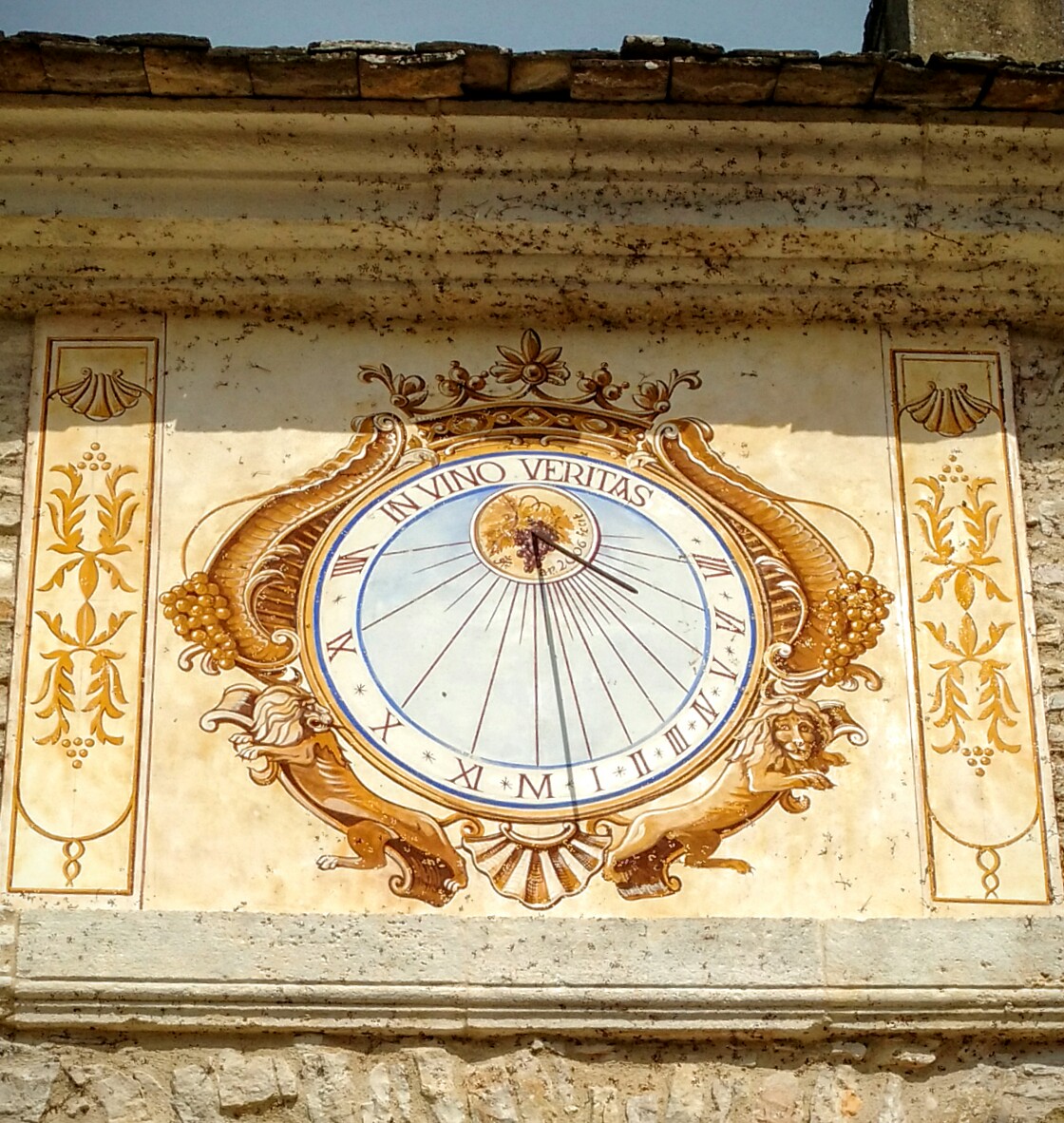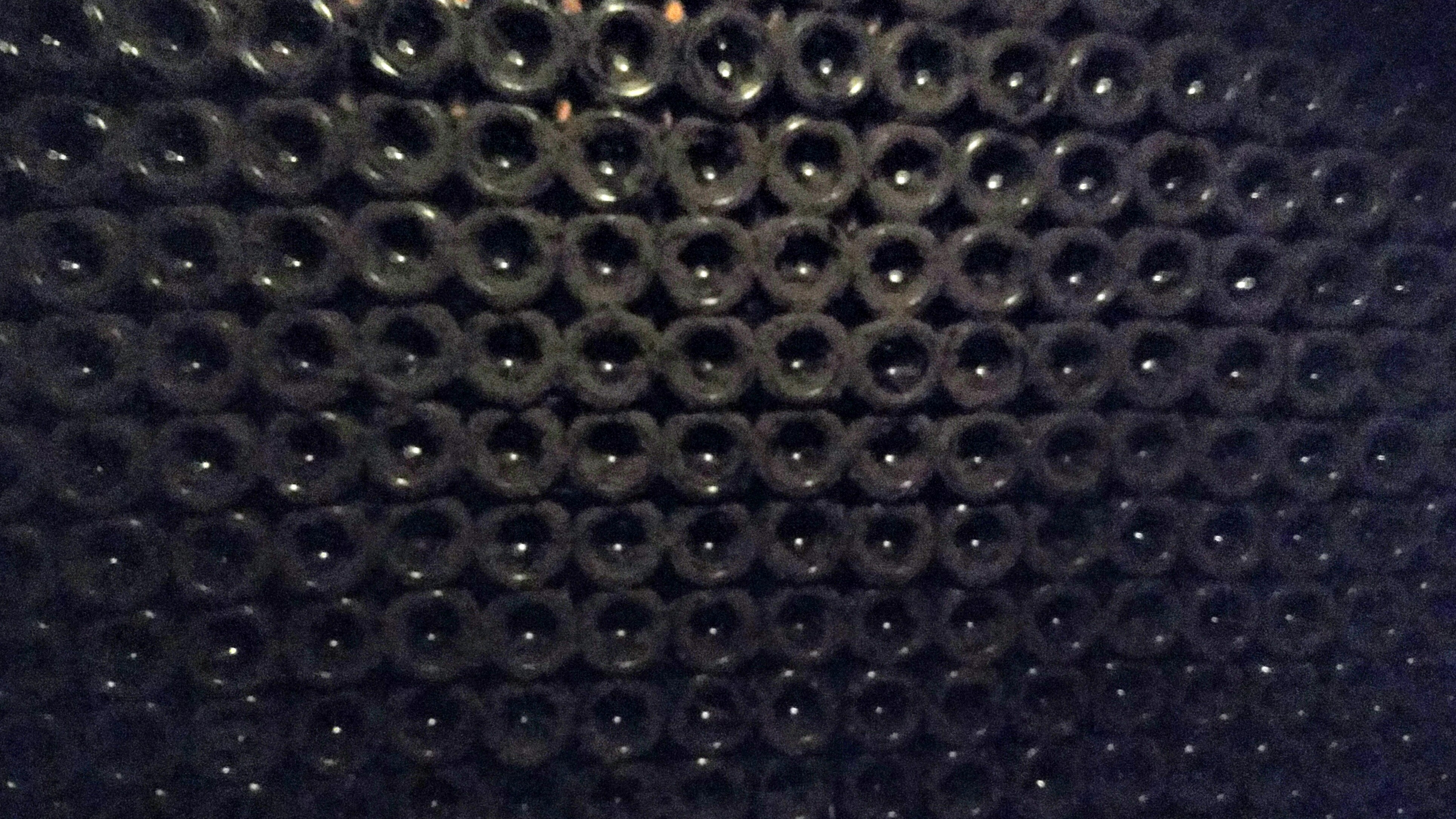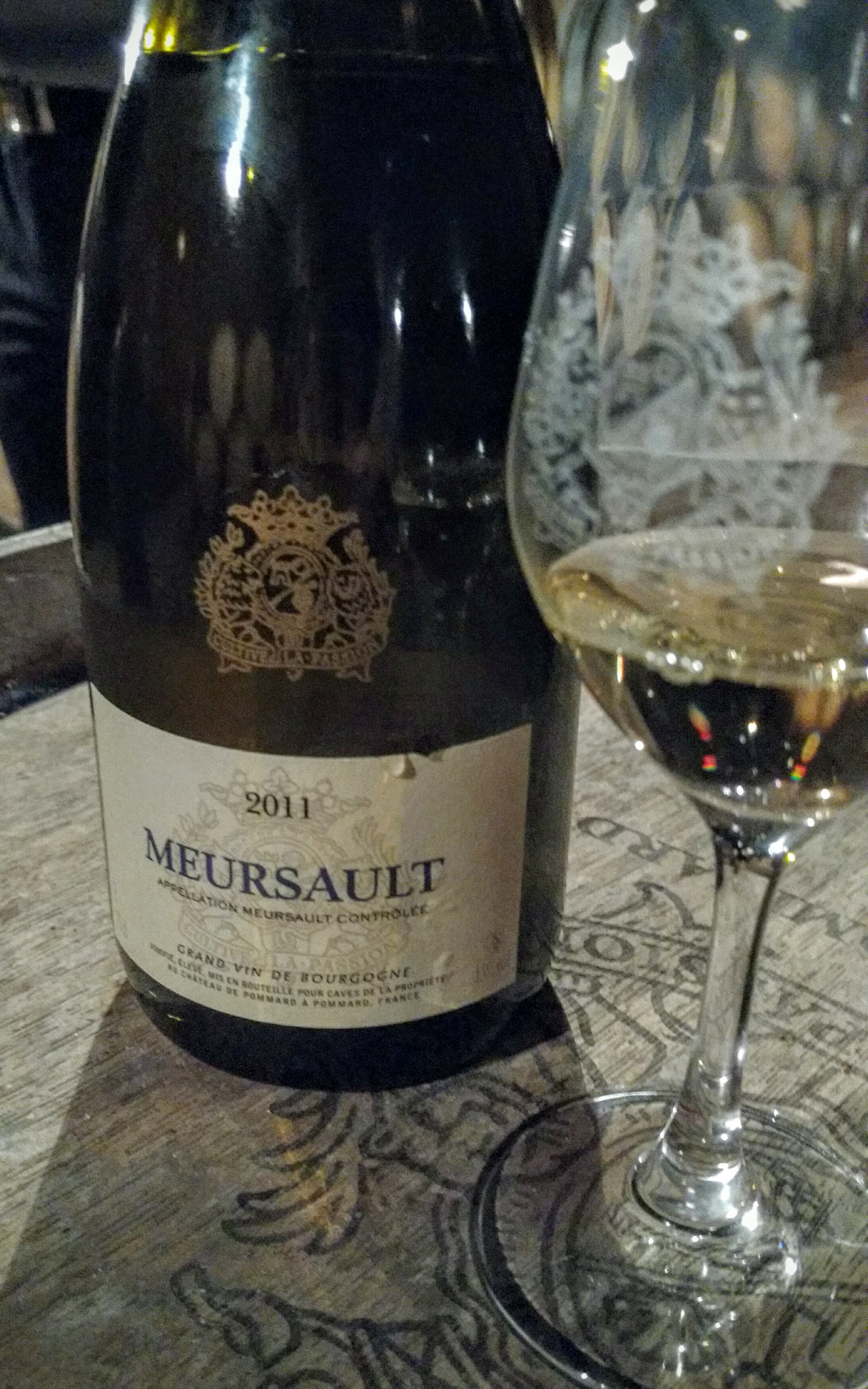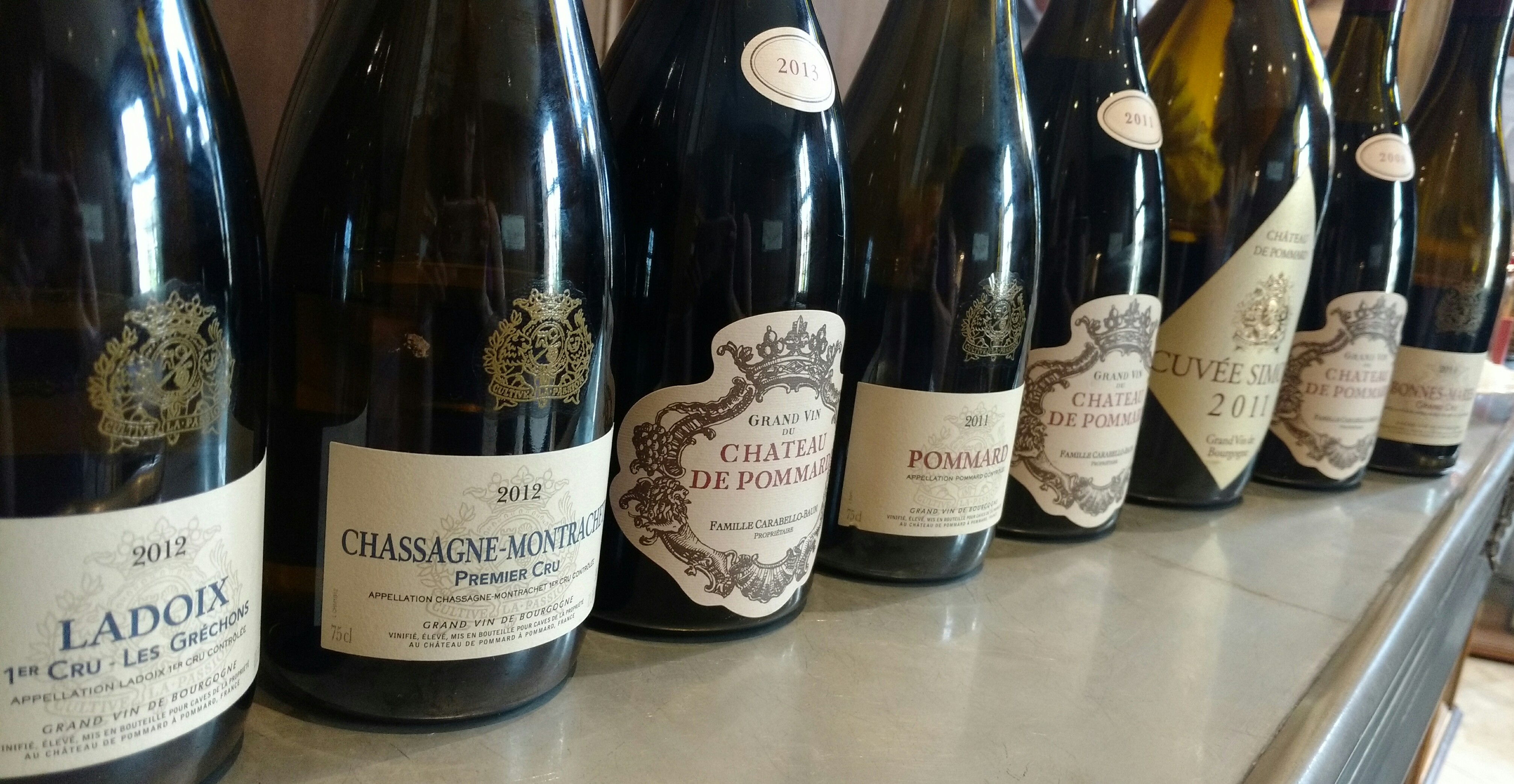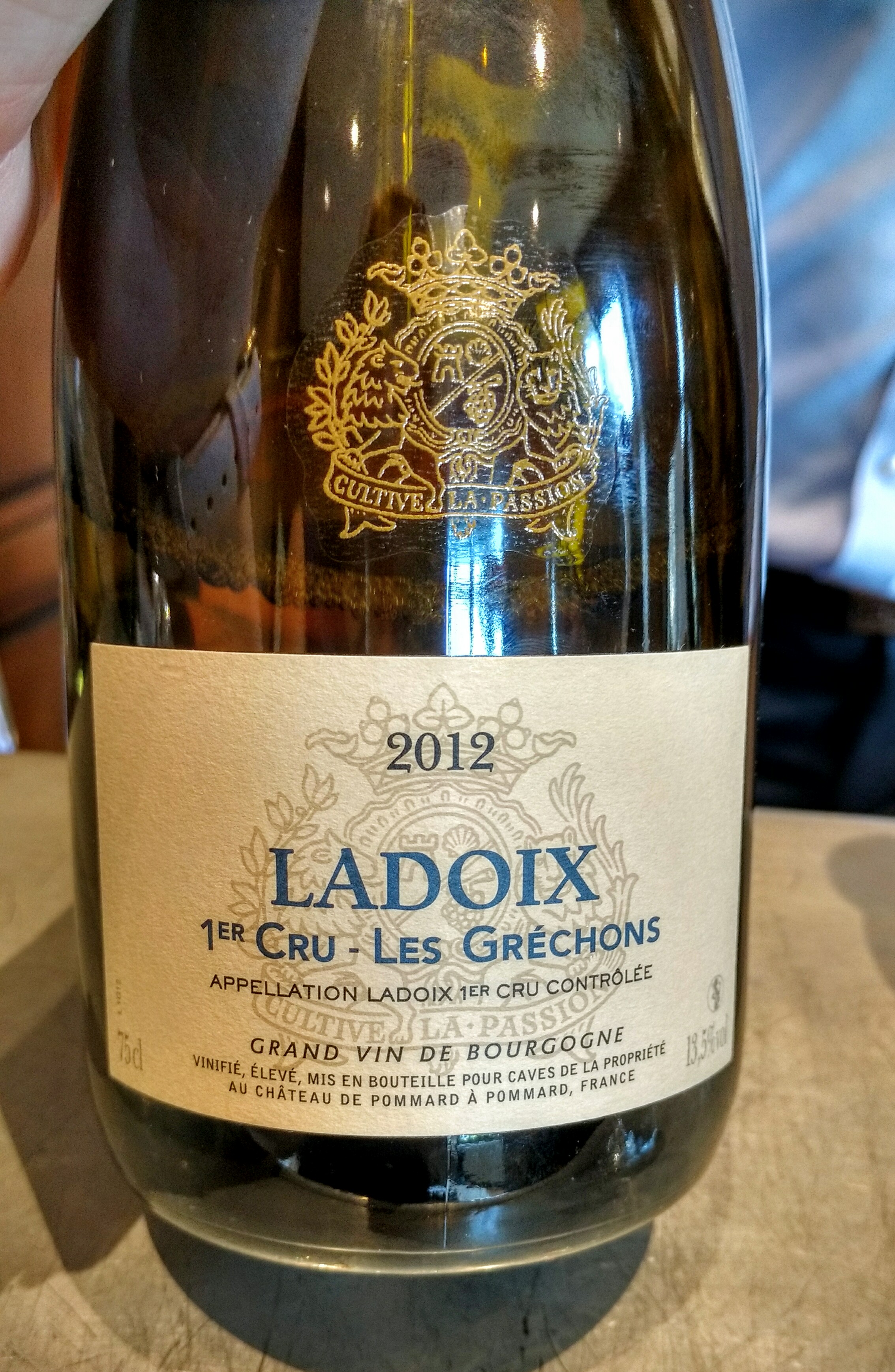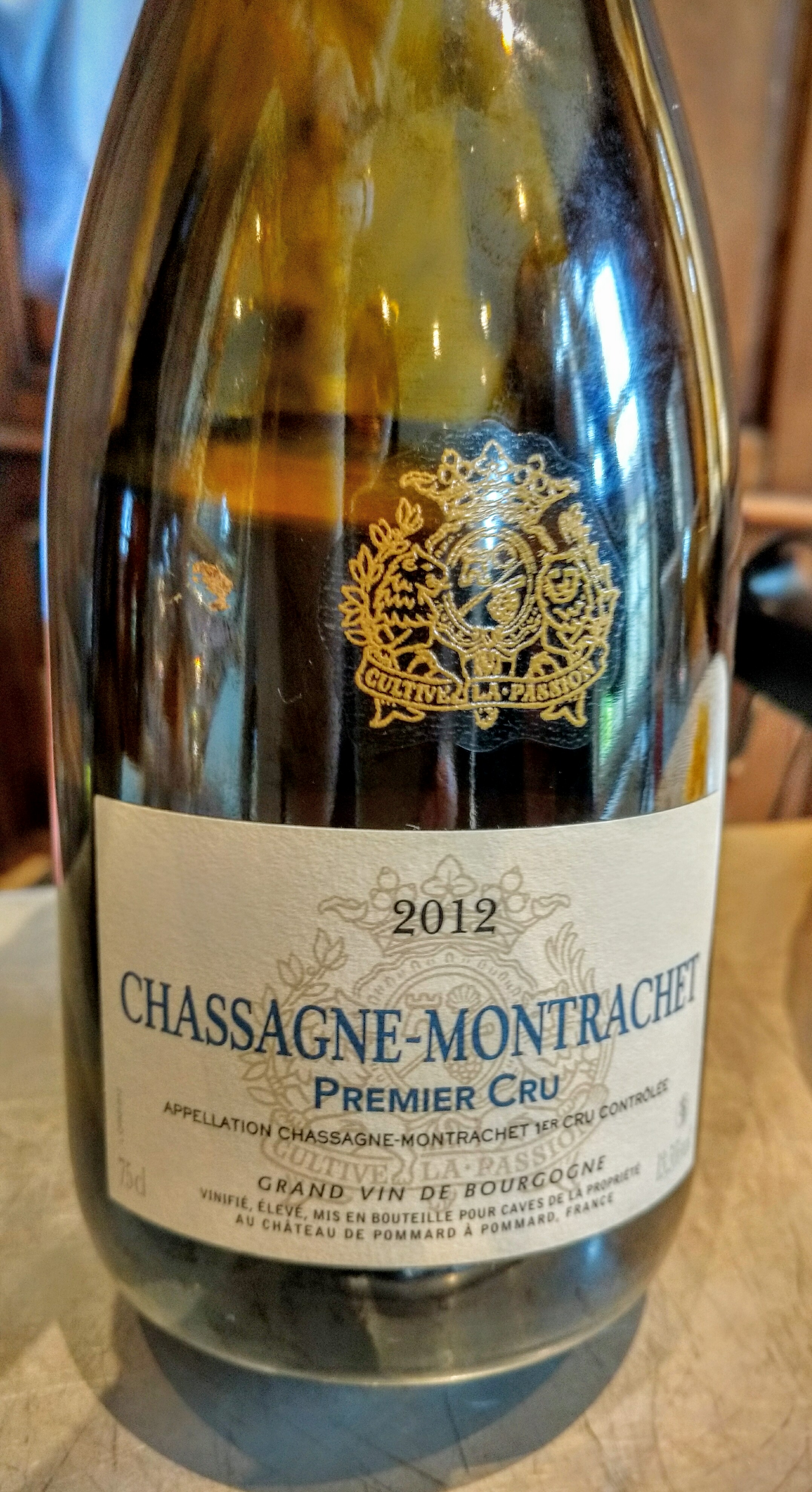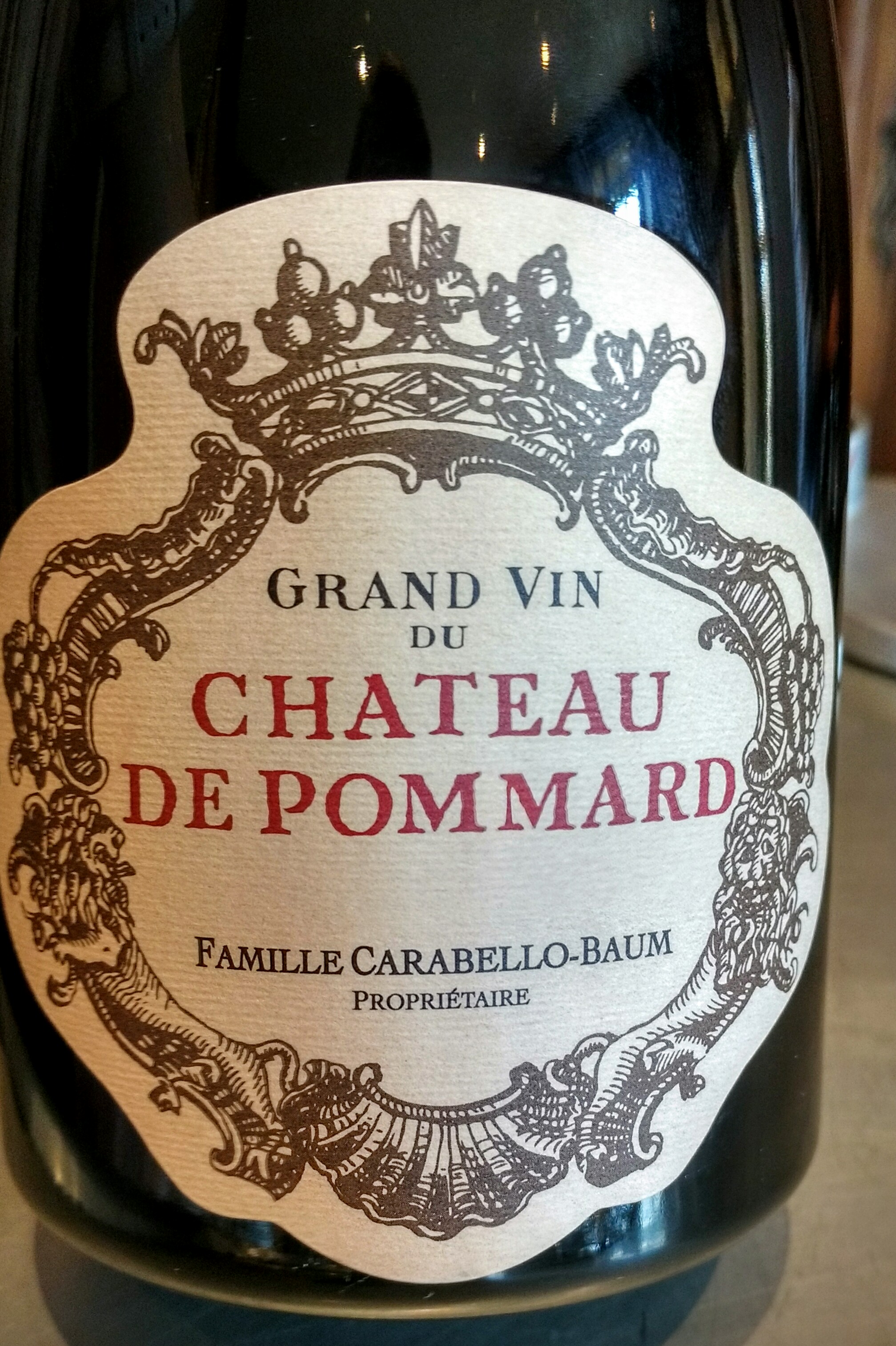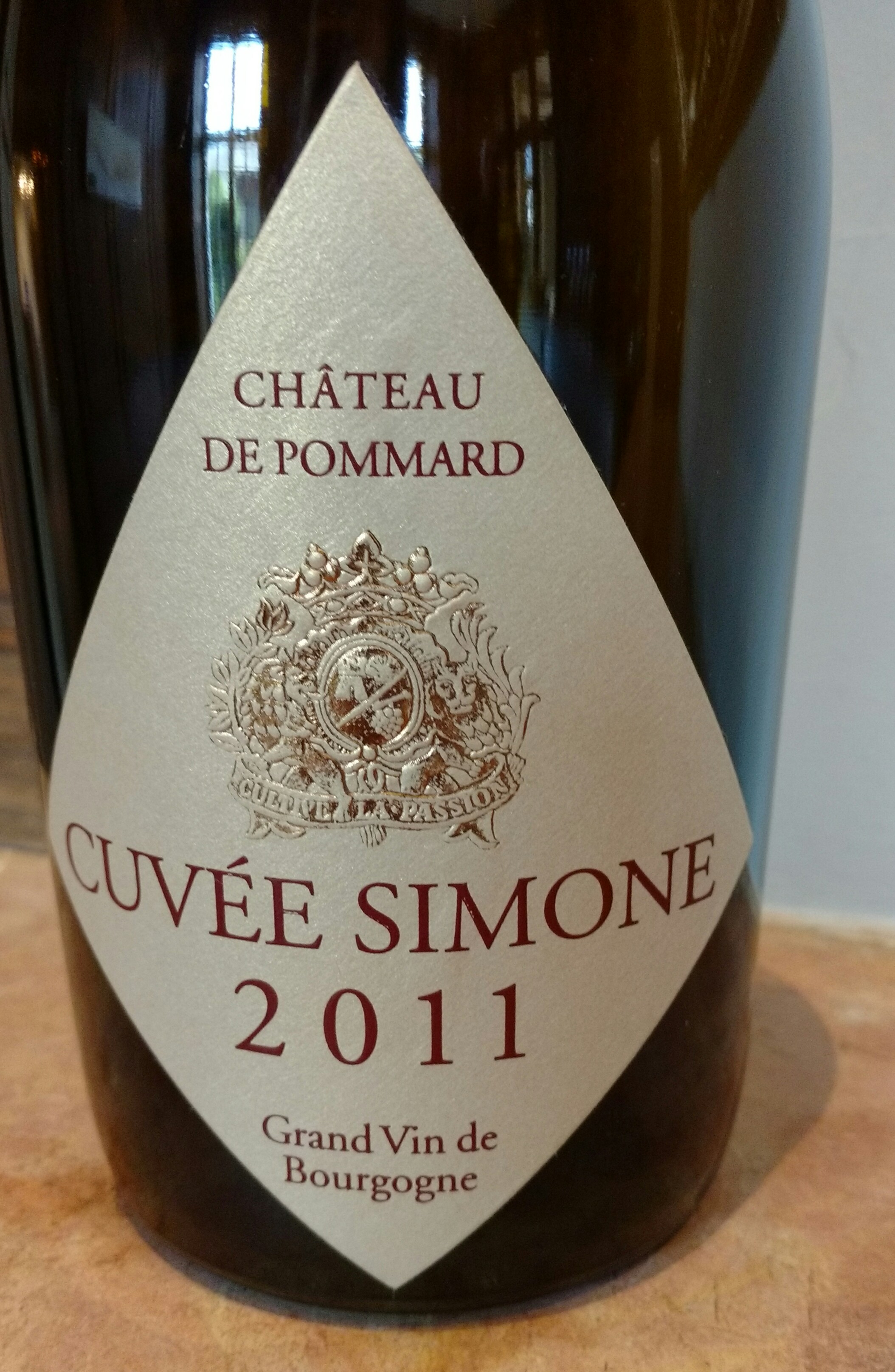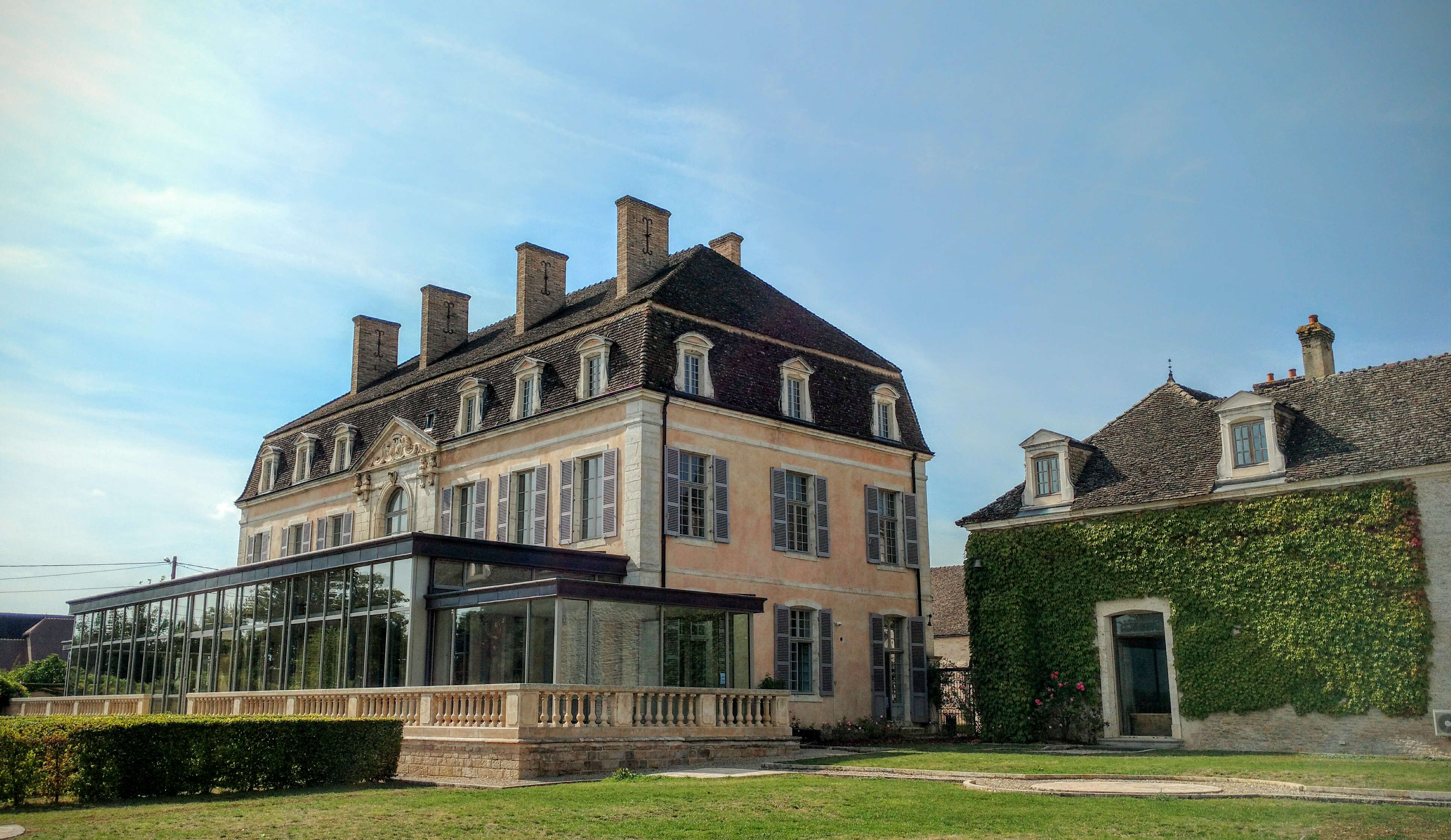 My trip has brought me to yet another eponymous Castle, Chateau de Pommard. This one has been transformed and completely adapted to wine tourism and visitors. Right on the Burgundian wine Route leading to Beaune, it can be seen from afar and offer quite a sight. Apart from wine producing, the estate is also a museum, an art gallery and a touristic attraction. It does change the historical feeling to it, but it’s still nice to see a big castle put to use for once.
My trip has brought me to yet another eponymous Castle, Chateau de Pommard. This one has been transformed and completely adapted to wine tourism and visitors. Right on the Burgundian wine Route leading to Beaune, it can be seen from afar and offer quite a sight. Apart from wine producing, the estate is also a museum, an art gallery and a touristic attraction. It does change the historical feeling to it, but it’s still nice to see a big castle put to use for once.
Mon voyage m’a mené  encore une fois vers un château éponyme, Château de Pommard. Celui-ci a été transformé et complètement adapté à l’œnotourisme et ses visiteurs. Directement sur la Route des vins de Bourgogne conduisant à Beaune, il peut être vu de loin et offre tout un spectacle. Outre la production de vin, le domaine est également un musée, une galerie d’art et une attraction touristique. Ça change un peu le feeling historique, mais c’est agréable de voir un grand château mis à profit pour une fois.
The castle was built to replace the much worn down feudal château of which nothing remain. Vivant Micault was a Cavalier, Paris Lawyer, Secretary to King Louis XV, Farmer-General and Directeur Général des Poudres et Salpêtres of the Kingdom and on and on from one of the oldest lineage in Burgundy. He was very ambitious about this winemaking project for the estate and he built right away enormous facilities that would only be needed much later.
Le château a été construit pour remplacer le très usé château féodal dont il ne reste rien. Vivant Micault était un Cavalier, Avocat Parisien, Secrétaire du roi Louis XV, fermier général et Directeur Général des Poudres et Salpêtres du Royaume et ainsi de suite venant de l’une des plus ancienne lignée en Bourgogne. Il était très ambitieux à propos de ce projet de vinification pour le Domaine et il a construit tout de suite des énormes installations qui ne seront utiles que beaucoup plus tard.
The Chateau de Pommard found some popularity only some generations later with Marey Monge. Traveling the world for his personal pleasure, he was bringing some wines with him to share and doing so, invented the very essence of international wine trading when important people from all around Europe showed interest in buying more.
Le Château de Pommard a trouvé une certaine popularité seulement quelques générations plus tard avec Marey Monge. Voyageant à travers le monde pour son plaisir personnel, il apportait des vins avec lui pour partager et se faisant, inventa l’essence même du commerce international du vin quand les gens importants de toute l’Europe ont manifesté leur intérêt à se procurer plus de ses vins.
The chateau Vivant-Micault is the principal castle since the estate has two! Afraid of having Château Micault seized during the French Revolution, the Marey- Monge family sold it, keeping only the vines, farming and winemaking facilities. When times were more peaceful, the new owners refused to sell it back and the family decided to build a new building, more modest and hiding in the clos. This was in 1802.
Le château Vivant-Micault est le château principal puisque le domaine en a deux! Effrayé que le Château Micault soit saisi au cours de la Révolution française, la famille Marey- Monge l’a vendu, ne conservant que les vignes, et les installations vinicoles. Lorsque les temps furent plus paisibles, les nouveaux propriétaires ont refusé de le revendre et la famille a décidé de construire un nouveau bâtiment en 1802, plus modeste, camouflé dans le clos.
The Courtyard at Chateau de Pommard holds a permanent art exhibition. Johan Creten, a very well-known ceramist from Paris has his sculpture all over the different part of the estate and a main exhibition in the art gallery available for visitors to see.
La cour du Château de Pommard présente une exposition permanente. Johan Creten, un céramiste très bien connu de Paris présente ses sculptures partout dans les différentes parties du domaine et une exposition principale à la galerie d’art est disponible pour les visiteurs.
600 burgundian pieces, about 300 000 bottles ageing silently are stacked carefully in the original cellar. I was afraid of getting lost if let alone. It’s incredibly big and full.
600 pièces bourguignonnes, environ 300 000 bouteilles vieillissant en silence sont empilés soigneusement dans la cave d’origine. J’aurais bien pu m’y perdre si j’avais été laissée à moi-même. La cave est incroyablement grande et remplie.
Even with the reputation of its terroir s and being the largest private wine monopole of Burgundy, the Clos is only designated as a village appellation. The 1855 and 1892 classifications had classified some part of it as First Cuvée at the time Marey-Monge refused it since he saw more fame in the Village name than in the new designation.
Même avec la réputation de son terroir et étant le plus grand monopole de vin en Bourgogne, le Clos est seulement désigné comme appellation village. Les classifications de 1855 et 1892 avaient classé une partie de celui-ci en tant que première Cuvée, mais à ce moment  Marey-Monge a refusé l’appellation. Il voyait plus de gloire au nom du village que dans la nouvelle désignation.
At Chateau de Pommard, we were welcomed with a Meursault… And at Chateau de Meursault I drank a Pommard. I’m confused. Not really. All the Côte D’or seems bigger than it really is. Just a couple kilometers cover this piece of Burgundy. This nice little Meursault was waiting for us in the cellar of Chateau Pommard, strangely at perfect temperature and sitting by two perfectly clean glasses, as if we were expected. It was a nice little gesture for the visit.
Au Château de Pommard, nous avons été accueillis avec un Meursault … Et au Château de Meursault, j’ai bu un Pommard. Je suis confuse. Pas vraiment. Toute la Côte D’or semble plus grande qu’elle ne l’est réellement. Ce morceau de Bourgogne s’étend sur seulement quelques kilomètres. Ce joli petit Meursault nous attendait dans la cave du Château Pommard, étrangement à  température parfaite et accompagné par deux verres parfaitement propres, comme si nous étions attendus. C’était un beau petit geste qui agrémente la visite.
Ladoix-Serrigny is a village of the Côte de Beaune, situated at the foot of the Aloxe-Corton hill. The Gréchons plot is exactly at the border of both appellations, the closest to Aloxe-Corton. The Chardonnay is quite powerful and floral. It is often referred to as the little Corton-Charlemagne.
Ladoix-Serrigny est un village de la Côte de Beaune, située au pied de la colline d’Aloxe-Corton. La parcelle les  Gréchons est exactement à la frontière des deux appellations, le plus proche d’Aloxe-Corton. Le Chardonnay est assez puissant et floral. Il est souvent désigné comme le petit Corton-Charlemagne.
This premier cru is a blend of many different plot but mainly Macherelles and Clos Saint-Jean. At first, the nose was quite closed. Some aeration and a couple more years to rest would do much good.
Ce premier cru est un mélange de plusieurs parcelles différentes, mais principalement Macherelles et Clos Saint-Jean. Comme première impression, le nez était assez fermé. Une bonne aération ou quelques années pour se reposer lui feraient beaucoup de bien.
The Grand Vin comes from the blending of the five main terroirs making up the Clos, Grand Champ, Nadine, Les Paules, Chantrerie and Simone. The different parcels are vinified separately and then combined together. The estate is not looking for consistency by doing so but for experimentation and quality no matter the vintage. The result is noticeable vintage variations and a unique wine each year.
Le Grand Vin provient de la fusion des cinq principaux terroirs qui composent le Clos, Grand Champ, Nadine, Les Paules, Chantrerie et Simone. Les différentes parcelles sont vinifiées séparément puis soigneusement combinés  ensemble. Le domaine ne cherche pas la consistance, mais plutôt l’expérimentation et la qualité, peu importe le millésime. Le résultat de ce procédé est une variation notable  de millésime et un vin unique chaque année.
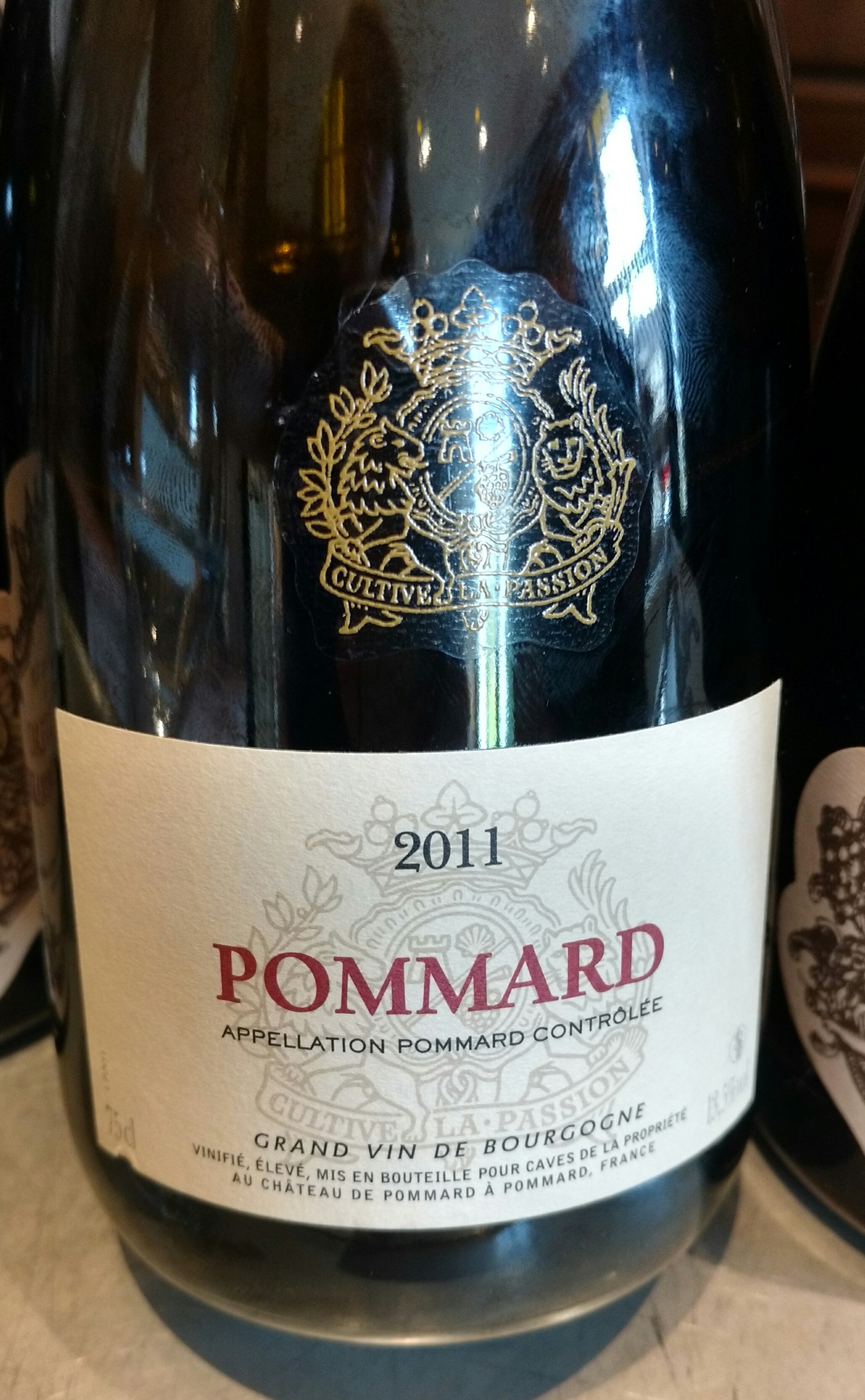 Second wine of the estate, made with the rest of the different terroirs used in the Grand Vin Blend. It was once called the young vines wine but this wasn’t completely true as the blend varies greatly every year.
Second wine of the estate, made with the rest of the different terroirs used in the Grand Vin Blend. It was once called the young vines wine but this wasn’t completely true as the blend varies greatly every year.
Second vin du domaine, fait avec les restes des différents terroirs utilisés dans le mélange Grand Vin. Il était autrefois appelé le vin des jeunes vignes, mais ce n’était pas tout à fait vrai puisque le mélange varie considérablement chaque année.
The Marey-Monge family had acquired many vineyards across burgundy such as La Romanée-Saint-Vivant, le Clos de Tart, Richebourg and this Bonnes-Mares. Bonnes-Mares is a grand crus appellation in Chambolle-Musigny and Morey-Saint-Denis of only around 15 hectares. It was definitely richer than the previous wines with strong forest floor notes.
La famille Marey-Monge avait acquis de nombreux vignobles à travers la Bourgogne tels que La Romanée-Saint-Vivant, le Clos de Tart, Richebourg et ce Bonnes-Mares. Bonnes-Mares est une appellation Grand crus à Chambolle-Musigny et Morey-Saint-Denis de seulement environ 15 hectares. Il était certainement plus riche que les vins précédents avec des notes fortes du sol forestier.
The fantastic cuvée Simone from chateau de Pommard is only available at the estate, only in Magnums. It comes from the Simone plot which has an incredible clay terroir said to be similar in its substance and nutrients to that of burgundian’s grand cru. It’s a special very limited cuvée, a discovery for me and the kind of wine you remember for the rest of your life, with a Wow factor.
La fantastique Cuvée Simone de château de Pommard est disponible uniquement à la propriété, seulement en Magnums. Il provient de la parcelle Simone qui a un terroir d’argile incroyable supposément similaire en consistance et en nutriments à celle des grands crus de Bourgogne. C’est une cuvée spéciale très limitée, une découverte pour moi et le type de vin que vous vous rappelez pour le reste de votre vie, avec un facteur Wow.

